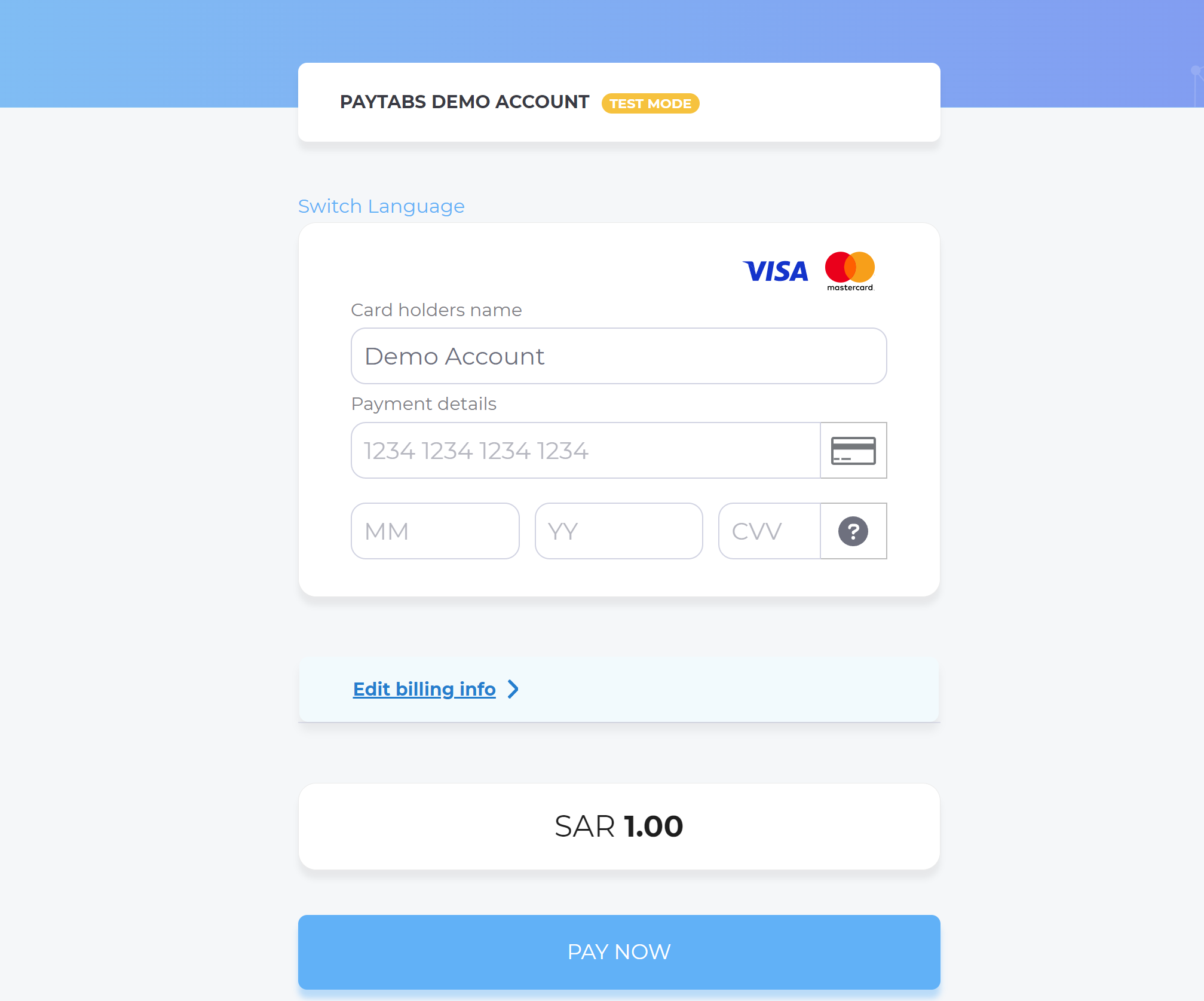Manage the Transaction Details
PayTabs provides you with the backend packages that make the integrating with PayTabs payment gateway very easy by providing ready-made classes that handle the payment process.
This article is dedicated to walking you through how to manage how to initiate a payment request with a specific transaction type. The following transaction type keys can be sent within the createPaymentPage function as shown below:
Through out the article we will use the transaction types clarified in our What is the "tran_type" (transaction type)? solution article.
Method Specification
That the transaction parameter is Mandatory, not passing it would throw an exception.
| Description | Create the Payment Page. |
|---|---|
| Since | 1.0.0 |
| Required | ✔ |
| Signature | |
| Sample | |
Method Parameters:
Transaction
| Name | transaction | ||||||||
|---|---|---|---|---|---|---|---|---|---|
| Type | Array | ||||||||
| Array Element values: |
| ||||||||
| Description | This is the second parameter of the createPaymentPage() function, which is an array of two elements the first one is the transaction type which you can mange, but the second one is the transaction class that will be always ecom NO other options are available using this package. | ||||||||
| Default | - | ||||||||
| Required | ✔ | ||||||||
| Example | |
Expected payment flow behaviour:
- As a merchant you would initiate a payment request per the above Specifications, which include a sample code.
- Then, after generating the payment page use the result to redirect the customer to the payment page.
function callbackMethod(result) {
//failed to create the payment page.
if (result['response_code:'] === 400) {
// get the message
console.log(result['result']);
// Next step
}
//success to create the payment page.
else {
//On success, redirect the customer to complete the payment.
console.log(result.redirect_url);
// Next step
};
}
PayTabs.createPaymentPage(
paymentMethods,
transaction_details,
cart_details,
customer_details,
shipping_address,
response_URLs,
lang,
callbackMethod,
frameMode
); - After this, your customer would proceed normally with payment by choosing the preferred payment method (if available), and providing his card information.

- Then, he will be redirected to his issuer bank 3DS/OTP page to authenticate the used card
- Finally, he would be redirect to a success/error page accordingly. By this time, you will be able to see his transaction on your merchant dashboard, whether it's accepted/authorized or not.

